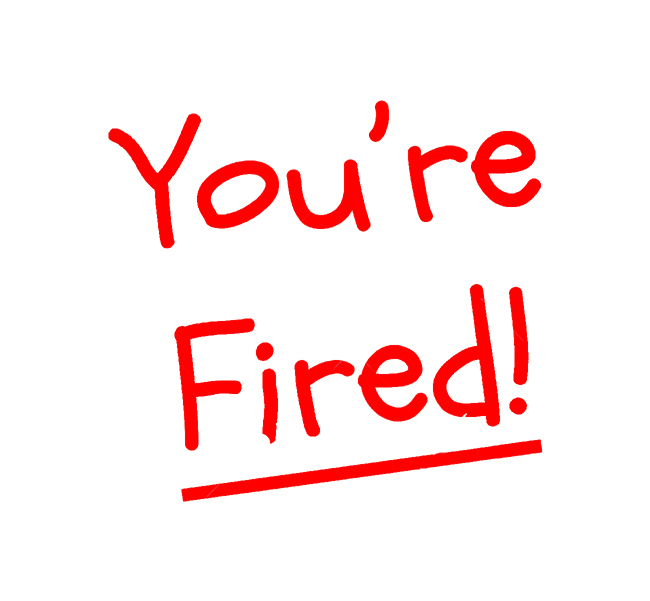Unfair dismissal.
Connie Bruwer from PC Bruwer and Partners gives advice about unfair dismissal and the serious consequences thereof.
Question: Last year the CCMA handled 128,000 cases. Eighty percent of these were about unfair dismissal. In two thirds of these cases, the employee had to be paid for damages by the employer because the procedures followed were unfair or followed incorrectly. Millions are paid out to employees – on an annual basis – that were retrenched and only because the procedures followed lacked the correct procedure of dismissal.
Connie: If your procedure is not followed in a fair manner and in accordance with the law, you will find yourself in trouble, no matter what the employee did to deserve dismissal. Most of the time this type of trouble is unnecessary and can be avoided by following the right procedures.
Question: What is the most common mistake employers make?
Connie: Employers do not follow the correct procedures. The Labour Relations Act contains a code of good practice in regards to dismissals, i.e. procedures that an employer must follow when they fire someone, but employees often don’t follow these procedures.
Question: Can you perhaps give us examples?
Connie: One example I know off is of a store employee that was dismissed over the telephone due to the fact that he closed the store early without a valid reason. In addition to the fact that his punishment was probably too strict for a first offense, it would even have been unfair if the correct procedure was followed, because the employee was not given a chance to present his side of the case to an independent person. In another case, a driver was fired because he delivered goods, while he was double-parked. The driver was fired without being able to give his side of the story.
Question: What should the employer do to avoid these mistakes?
Connie: Step 1: Inform the employee first that he / she will be charged for an offense and explain exactly what the offense is.
Step 2: Give the employee a reasonable period to think about the charge against him and how to respond. This feedback should take the form of a meeting in which the employer and employee can both tell their sides of the story to an independent person.
Step 3: The independent person should listen first to both parties and then inform both parties in writing what the decision is. It should be in an easy understandable language.
Question: What mistakes are still easily made?
Connie: When an offense has been committed, it often happens that the person who made the complaint and the person, who was the key witness, is simply the person who conducts the hearing – usually the boss. The CCMA will often in such a case agree with the employee that such a process, which led to the dismissal of an employee, was unfair and the employer will be penalized for it.
Question: Can you give us an example of such a case?
Connie: A truck driver was drunk on duty and was charged with drunken driving. The employee received advance notice of the hearing and he was able to put his side of the story, but the trial was unfair because of the fact that the employee had received an impartial trial – the chairman, witness and boss were all the same person.
Question: What the employer must do to avoid these mistakes?
Connie: Step 1: The employer must ensure that there are three parties at the hearing, namely the employer, the employee and a third person attending the hearing.
Step 2: Ensure that the third party is not biased towards any party.
Step 3: Give both him and the employee equal opportunity to present their case and to be heard.
Question: What other mistakes are committed by employers?
Connie: Employers tend to pull things out of context regarding the real offense that was committed. They tend to charge employees for serious offenses that may justify dismissal, whilst the employee in many cases has not committed a serious offense. The employer will in such a case be penalized for unfairness.
Question: Can you perhaps give an example?
Connie: An employee was fired because he used the Internet to conduct personal banking transactions. The charge was theft (of the business time), but the more appropriate charge would have been misuse of the company’s property.
Question: What should the employer have done?
Connie: Step 1: Decide exactly what the employee did wrong and what the offense is. The employer must ask – is this an offense or is it a performance issue?
Step 2: Based on this decision, the employer should decide whether he wants to fire the employee or whether a more progressive process would not be more acceptable. The process should be a warning, counseling or even training.
Question: Can an employee be fired for minor offenses?
Connie: This problem often follows the error that occurs when the employer does not specify or clarify what the exact offense was. An example will illustrate this: An employee was charged with theft after a few leftover office biscuits were eaten.
A similar offense would be to fire a worker if he was rude to a customer on the phone. To penalize a receptionist for such an offence is a different story, but a general worker cannot be fired because of it.
Question: What advice do you have for employers?
Connie: Step 1: Ask the question: Is it fair to dismiss my employee for this offense?
Step 2: Examine the work records of the employee.
Step 3: Ask whether the dismissal of the worker is logical and reasonable or whether it is based only on hearsay.
Step 4: Ask if the employee is aware of the company’s rules and regulations and of the rules contained in the employee’s letter of appointment. In other words, is the employee informed of the business rules or does the employer make rules as it suits him?





